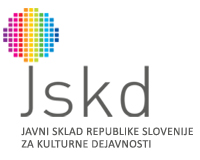|

OPUS 1 – SHORT DANCE PIECE 2011
Short note to mentors and young dancers/authors:
The aim of OPUS 1 – SHORT DANCE PIECE is not to push for competitiveness but to foster their creativity.
Annual topics are meant to stimulate critical thinking in young performers about specific issues and give them means to learn about, research and study specific topics and dancers/artists.
FUSION
To fuse means to blend, merge, join, unite, melt different elements. In science, fusion describes how our Sun produces its energy. Atomic nuclei fuse into heavier elements releasing a vast amount of energy. Scientists around the world have for many years been trying to find the way to utilise this natural phenomenon to produce electricity. Fusion is the energy source of the future.
But fusion is not limited to the world of science. The word is also used in economy, music, fashion, cooking, dancing…
Modern dance is in itself an “art of fusion”, as its most visible characteristic is a continuous change – the search for new forms, topics and movements.
Contemporary dance techniques are a mixture of various dance and movement techniques which intertwine and complement each other. As soon as someone develops a dance technique, somebody fuses it with a different one. This has become a rule in the field, as an encoded dance technique would spell the end for learning, searching and experimenting in this field.
Dance as an art form ceaselessly reacts to social and political change and reflects the period we live in. In today’s age of globalisation and sweeping colonisation, various things, styles, modes and emotions mix and use each other’s elements in order to express and critically perceive our reality.
This year’s topic wants to ignite fusion, the merging and joining of seemingly incompatible elements – both formal and contextual – into a new form, a new feeling, a new message.
Some examples:
- Fusion of various dance styles
- Influence of various dance customs and traditions
- Merging dance with other media (words, videos, visual arts...)
- Merging of various movement attributes.....
And a lot more...Numerous questions and ideas will arise!
Mentors should discuss the topic with the young performers, while the latter should also be autonomous and critical in creating their views about it.
The most important part of the competition is the process of shaping the idea and creating the short dance piece – the process of learning and self-development. During the process, young performers should draw on their existing self-confidence or be able to acquire it.
The role of the mentor in creating the short dance piece is to counsel, lead and guide children/the young into creating their own ideas, dance expressions and autonomous choreographies.
Aplication Form
Rules
|


